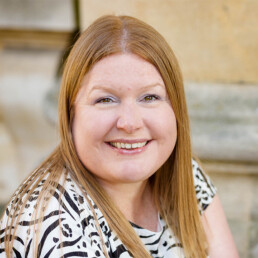
Hannah Wilson
Blog originally published here.

Invited to contribute to one of The Big Education’s ‘Big Conversations’ I was excited to join a stellar line up including Sir Tim Brighouse, Karen Giles and Nadine Bernard. Each speaker contributed a perspective on leadership which we all agreed should be underpinned by values, integrity and authenticity. However, we realised that in order to talk with conviction about vulnerability it felt appropriate to reveal some of our own vulnerabilities, both professionally and personally, so that the audience may learn from our reflections on our career experiences and indeed mistakes we had made along the way.
So, my musings began: Is vulnerability a new thing? Indeed, it is not. Is it a new thing when we are looking at leadership? Perhaps it is. How does it relate to hero leadership? Well, this is where it gets interesting in my eyes – if we review the dominant narrative and imagery of leadership, it is depicted as acts of heroism, as an effective leader being a strong leader, and often through a gender stereotyped lens too.
When you start searching for vulnerability definitions and quotations some common ideas begin to take shape which encompass elements of uncertainty, risk and emotional exposure. An expert in the field of vulnerability is Positive Psychologist Brene Brown who has written a number of books and delivered a TED talk on why we need to embrace it.
“Vulnerability is at the core, the centre, of meaningful human experiences”. (Brown)
Thus as schools are people-centred, and the ultimate success of a school is based on the quality of the relationships nurtured between the people the school serves and those who are serving them, then the messiness of the human existence and the rawness of human vulnerability is at the core of education.
As school leaders we work with increasingly vulnerable communities. We are under daily pressure to meet the needs of the children in our care, their families and the wider community. As a headteacher I was acutely aware of the emotional labour my team were weighed down with as we safeguarded our school community. As a school we decided to put mental health and wellbeing at the centre of our curriculum and our decision making as a school, which elevated the initiatives we committed to such as our art therapy, thrive and nurture programmes.
Alongside the needs of our students, we also needed to meet the needs of our vulnerable staff. As a school who was prepared to do things differently to strive for a different outcome, our hope and optimism attracted staff who were looking for solutions, staff who wanted to stay in the system but who were feeling forced out. A school is often a safe haven, a place of security and stability, a place of belonging and visibility, a place of diversity and inclusion. In her work on silence and speaking out, Audrey Lourde suggests “that visibility which makes us most vulnerable is that which also is the source of our greatest strength”. (Lourde, 2017)
“Vulnerability sounds like truth and feels like courage. Truth and courage aren’t always comfortable, but they are never weakness”. (Brown, Daring Greatly , 2015)
It has become more and more apparent that some schools are more vulnerable than others to work in. Schools serving the disadvantaged communities, coastal schools and schools with poor inspection outcomes often become SNOW schools (schools no one wants) which are then often academized and (re) brokered into trusts to fix.
In our current school system we equally find that school teachers and school leaders are finding themselves in increasingly vulnerable roles. The ‘glass ceiling’ for women leaders in the school system has been a high-profile topic of debate for the last five years since we started #WomenEd a grassroots gender equality movement. With the arrival of our sibling #BAMEed, our reflections and discussions moved from the ‘glass’ ceilings to ‘concrete’ ceilings as we scrutinised the data of the demographic breakdown of our teachers and leaders versus our students. In an increasingly diverse country, with nearly one quarter of children in our primary schools representing a range of different cultures we have a disconnect when the number of BAME teachers is significantly lower than this and the number of BAME school leaders represent a marginal percentage. With national initiatives to increase the number of women and BAME headteachers, we need to ensure that they are recruited to roles which are well-supported and do not end up in roles which are ‘glass cliffs’, those roles which are isolated, unstable and unsupported. Vulnerable demographic groups ending up in vulnerable roles in vulnerable schools is problematic for our workforce data as the narrative then becomes warped about who the ‘heroes’ in the system are.
“Vulnerability is not winning or losing; it’s having the courage to show up and be seen when we have no control over the outcome. Vulnerability is not weakness; it’s our greatest measure of courage”. (Brown, Rising Strong, 2015)
We also find ourselves in an era where we are struggling to recruit and retain teachers, but equally where we have a high attrition rate and mobility of headteachers. There is an emerging narrative of headteachers speaking out about the vulnerability of their role. James Pope, the former Headteacher who featured on the ‘School’ television documentary has started a campaign and series of events to support school leaders who are casualties of the system. With the corporatisation of our education system, the HR processes and systems in schools are becoming increasingly business like. The language of ‘NDA’s, ‘Gagging Orders’, ‘Pay Offs’ and ‘Gardening Leave’ is now commonplace.
As I prepared my speech, listened to the other speakers, reflected on the topic and discussed it with others in the room my final thoughts are: is there a difference to being vulnerable and feeling vulnerable as a school leader? Do we thereby need to learn from and embrace these facets in different ways?
“Daring greatly means the courage to be vulnerable. It means to show up and be seen. To ask for what you need. To talk about how you’re feeling. To have the hard conversations”. (Brown, Daring Greatly , 2015)
To embrace our vulnerability we are encouraged to: find the courage to be seen; ask for what we need; accept the imperfect; show compassion to self and others; talk about how we are feeling; be authentic; be prepared to take risks; own our stories. A great piece of advice I once received stated that: maybe life isn’t about avoiding the bruises, maybe it’s about collecting the scars to prove we showed up for it. This resonated with me and my philosophy of character education, growth mindset and learning from mistakes, as a fear of failure can inhibit our potential. In order for us to be ‘innovative, creative and agents of change’ we need to lean into our vulnerability. (Brown, Daring Greatly , 2015)
Hannah Wilson
Former Executive Headteacher, Co-Founder of #WomenEd and Head of Secondary Teacher Training
References
Brown, B. (2015). Daring Greatly . New York: Penguin.
Brown, B. (2015). Rising Strong . New York: Penguin.
Brown, B. (n.d.). The Power of Vulnerability. TED Talk.
Lourde, A. (2017). Your Silence Will Not Protect You. Silver Press.
